It looks like you're using an Ad Blocker.
Please white-list or disable AboveTopSecret.com in your ad-blocking tool.
Thank you.
Some features of ATS will be disabled while you continue to use an ad-blocker.
share:
a reply to: Hulseyreport
You
False argument. Fire running oxygen lean makes soot that stains steel and material.
Notice the pictured below? Cut by torch. The steel is not black on the cut. Is a dull metallic grey.
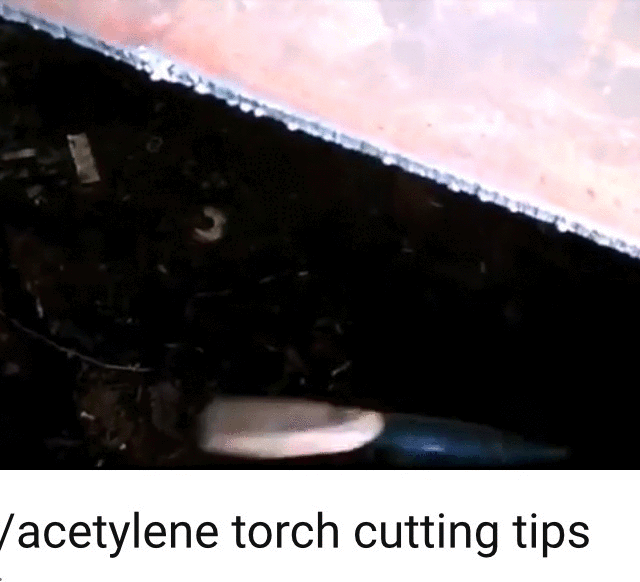
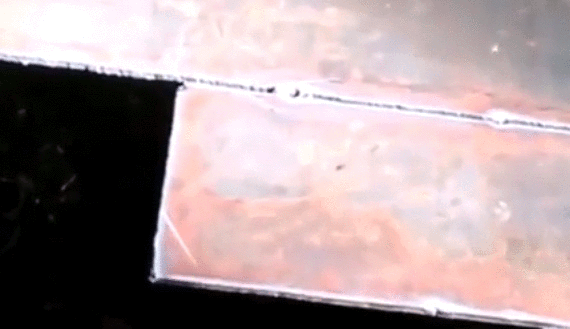
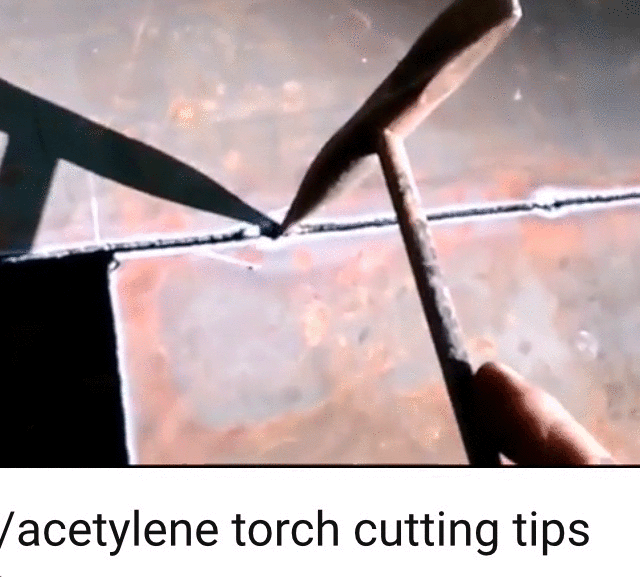
You
The steel was definitely very hot you can see black patches,
False argument. Fire running oxygen lean makes soot that stains steel and material.
Notice the pictured below? Cut by torch. The steel is not black on the cut. Is a dull metallic grey.



edit on 12-12-2019 by neutronflux because: Added and fixed
a reply to: Hulseyreport
You
What does that have with the actual mechanism of collapse.
And the columns below the initial buckling did no fall until lose of lateral support after the collapse of the floor system.
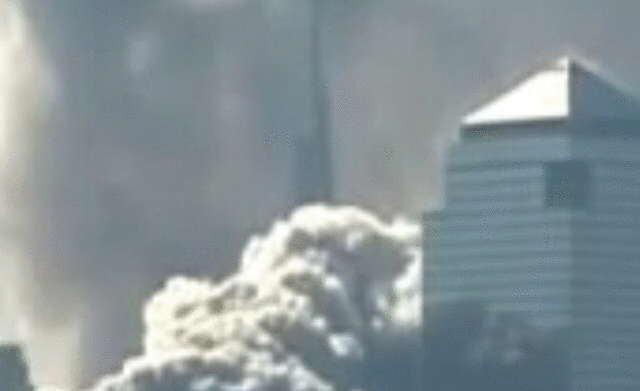
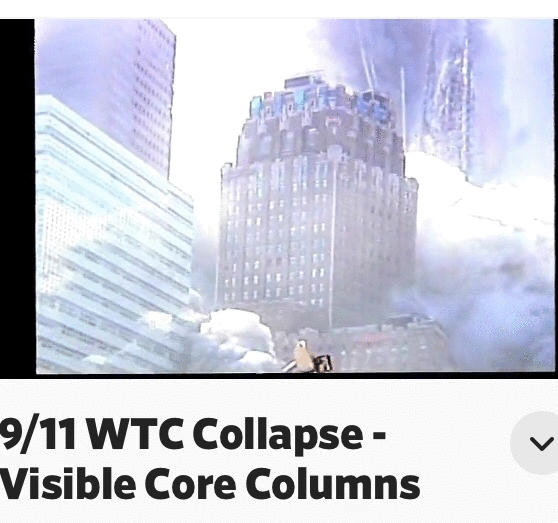
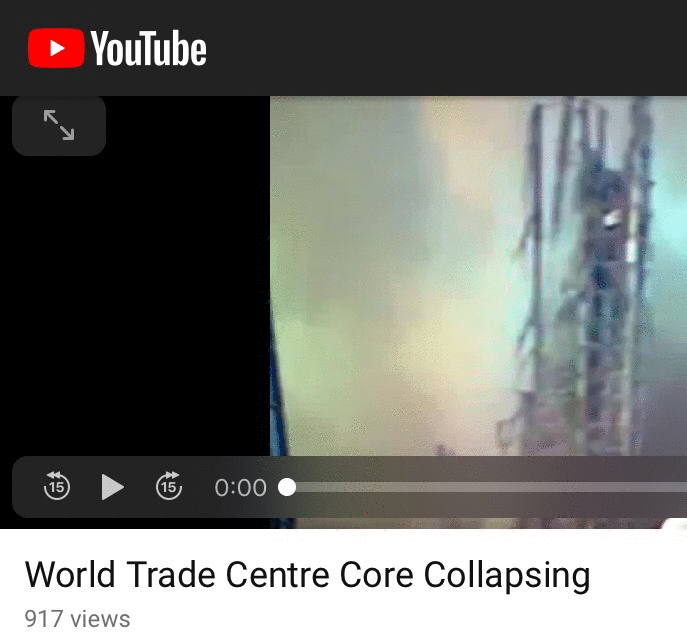
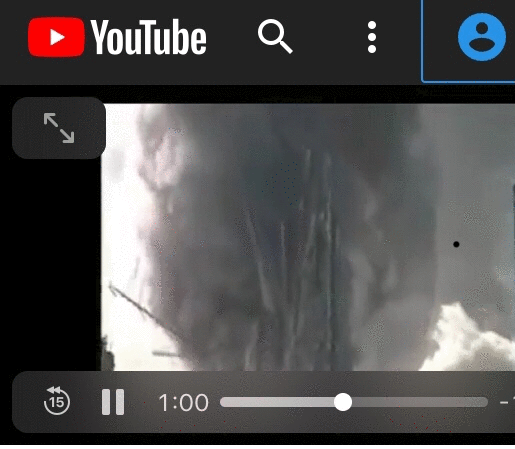
Notice the columns with no indication of molten steel.
You
Remember tower 2 collapsed in about 40+ minutes after impact. So the fireproofing had to be removed by NIST no matter what!
What does that have with the actual mechanism of collapse.
And the columns below the initial buckling did no fall until lose of lateral support after the collapse of the floor system.




Notice the columns with no indication of molten steel.
a reply to: Hulseyreport
You
If the steel was actual exposed to high heat, it would be slagged over. There is no slag. In areas of bare metal, the metal would be tempered in different hardnesses of blues to straw color.
If you are referring to black oxide of steel vs stained by soot/ash/smoke, the steel doesn’t even have to be that hot.
You
The steel was definitely very hot you can see black patches,
If the steel was actual exposed to high heat, it would be slagged over. There is no slag. In areas of bare metal, the metal would be tempered in different hardnesses of blues to straw color.
Tempering (metallurgy)
en.m.wikipedia.org...(metallurgy)
If steel has been freshly ground, sanded, or polished, it will form an oxide layer on its surface when heated. As the temperature of the steel is increased, the thickness of the iron oxide will also increase. Although iron oxide is not normally transparent, such thin layers do allow light to pass through, reflecting off both the upper and lower surfaces of the layer. This causes a phenomenon called thin-film interference, which produces colors on the surface. As the thickness of this layer increases with temperature, it causes the colors to change from a very light yellow, to brown, then purple, then blue. These colors appear at very precise temperatures, and provide the blacksmith with a very accurate gauge for measuring the temperature. The various colors, their corresponding temperatures, and some of their uses are:
Faint-yellow – 176 °C (349 °F) – engravers, razors, scrapers
Light-straw – 205 °C (401 °F) – rock drills, reamers, metal-cutting saws
Dark-straw – 226 °C (439 °F) – scribers, planer blades
Brown – 260 °C (500 °F) – taps, dies, drill bits, hammers, cold chisels
Purple – 282 °C (540 °F) – surgical tools, punches, stone carving tools
Dark blue – 310 °C (590 °F) – screwdrivers, wrenches
Light blue – 337 °C (639 °F) – springs, wood-cutting saws
Grey-blue – 371 °C (700 °F) and higher – structural steel
Beyond the grey-blue color, the iron oxide loses its transparency, and the temperature can no longer be judged in this way.
If you are referring to black oxide of steel vs stained by soot/ash/smoke, the steel doesn’t even have to be that hot.
Hot black oxide Edit
Hot baths of sodium hydroxide, nitrates, and nitrites[3] at 141 °C (286 °F)[4] are used to convert the surface of the material into magnetite (Fe3O4). Water must be periodically added to the bath, with proper controls to prevent a steam explosion.
Hot blackening involves dipping the part into various tanks. The workpiece is usually "dipped" by automated part carriers for transportation between tanks. These tanks contain, in order, alkaline cleaner, water, caustic soda at 140.5 °C (284.9 °F) (the blackening compound), and finally the sealant, which is usually oil. The caustic soda bonds chemically to the surface of the metal, creating a porous base layer on the part. Oil is then applied to the heated part, which seals it by "sinking" into the applied porous layer. It is the oil that prevents the corrosion of the workpiece. There are many advantages of blackening, mainly:
Blackening can be done in large batches (ideal for small parts).
There is no significant dimensional impact (the blacking process creates a layer about a micrometre thick).
It is far cheaper than similar corrosion protection systems, such as paint and electroplating.
The oldest and most widely used specification for hot black oxide is MIL-DTL-13924, which covers four classes of processes for different substrates. Alternate specifications include AMS 2485, ASTM D769, and ISO 11408.
This is the process used to blacken wire ropes for theatrical applications and flying effects.
Mid-temperature black oxide Edit
Like hot black oxide, mid-temperature black oxide converts the surface of the metal to magnetite (Fe3O4). However, mid-temperature black oxide blackens at a temperature of 220–245 °F (104–118 °C), significantly less than hot black oxide. This is advantageous because it is below the solution's boiling point, meaning there are no caustic fumes produced.[5]
Since mid-temperature black oxide is most comparable to hot black oxide, it also can meet the military specification MIL-DTL-13924, as well as AMS 2485.[6]
Cold black oxide Edit
Cold black oxide is applied at room temperature. It is not an oxide conversion coating, but rather a deposited copper selenium compound. Cold black oxide offers higher productivity and is convenient for in-house blackening. This coating produces a similar color to the one the oxide conversion does, but tends to rub off easily and offers less abrasion resistance. The application of oil, wax, or lacquer brings the corrosion resistance up to par with the hot and mid-temperature. One application for cold black oxide process would be in tooling and architectural finishing on steel (patina for steel).[7] It is also known as cold bluing.
en.m.wikipedia.org...
a reply to: Hulseyreport
So. You need to state what processes would cause the steel to turn black but not slag over.
So. You need to state what processes would cause the steel to turn black but not slag over.
originally posted by: Hulseyreport
There practically no evidence the fireproofing was removed on upper floors
No evidence except for the 1/2" of fireproofing dust lying on the ground after the planes hit.
a reply to: Hulseyreport
So? Show a piece of pure steel that was melted? The pile was full of chemicals that attached the steel and resulted in compounds with lower melting points. Again, cite examples of recovered pools of frozen metal? Again, molten melt when hit with water causes violent steam eruptions. Please cite a case of molten steel reacting violently with water at ground zero? Like when the pile was sprayed to control the smoldering and flashing.
So? Show a piece of pure steel that was melted? The pile was full of chemicals that attached the steel and resulted in compounds with lower melting points. Again, cite examples of recovered pools of frozen metal? Again, molten melt when hit with water causes violent steam eruptions. Please cite a case of molten steel reacting violently with water at ground zero? Like when the pile was sprayed to control the smoldering and flashing.
originally posted by: waypastvne
originally posted by: Hulseyreport
There practically no evidence the fireproofing was removed on upper floors
No evidence except for the 1/2" of fireproofing dust lying on the ground after the planes hit.
Conspiracists, and their bizaro-logic. Only thermite makes shiny iron micro spheres but make steel black? Jet impact that bashed through vertical columns, cut floor panels, breaking floor tresses, severing electrical and plumbing services, wrecked that acted like a shotgun blast wound NOT remove / damaged insulation that was documented as already being deficient pre-9/11.
originally posted by: Hulseyreport
Fireproofing insulation.
There is no fireproofing on the steel in that photo.
originally posted by: waypastvne
originally posted by: turbonium1
All that matters is - a structure cannot collapse through itself, and never will. It is impossible. Physics proves it is impossible. It is not possible to replicate such a collapse, in any way.
There are a lot of papers written about something you say doesn't exist.
www.google.com...
Your opinion doesn't matter, never will, because you are wrong.
You can point to stacks of papers, and claim 'that shows you are wrong', all you want. The papers don't prove anything, and if they DID, you'd be able to cite specific examples of it, instead of pointing to a pile of papers, as if that's 'proof' or something!!
Again, it comes down to the basic physics. There are no magical exceptions, no magical structures, no magical events, that defy reality, and real world physical principles, which hold up, no matter what you wish to believe.
Instead of pointing to stacks of papers, why don't you cite a specific example or two, that proves such a collapse happened before, or since, the towers? I'd love to see you prove this, because nobody else has...
originally posted by: turbonium1
You can point to stacks of papers, and claim 'that shows you are wrong', all you want.
You can point at this photo and say that truss seat can not be broken, all you want. We know you are wrong. It has an ultimate strength, it is 94000 pounds. On 9/11 that limit was exceeded.
We have explained to you how the building collapsed.
Now, for a change, why don't you explain to us, why the building can't collapse, using physics.
a reply to: turbonium1
Failure of Welded Floor Truss Connections from the Exterior Wall during Collapse of the World Trade Center Towers
app.aws.org...
Summary
Analysis of the connections supporting the composite floor system of the WTC towers showed that at and below the im- pact floors, the greater majority (above 90%) of the floor truss connections were either bent downward or completely re- moved from the exterior column. This was probably related to the overloading of the floors below the impact region after col- lapse initiation. Depending upon weld joint geometry, detachment of the main load-bearing seats was a result of either fracture in the heat affected zone of the base material (standoff plate detached from spandrel) or through the weld metal (seat angle detached from standoff plate). Failure in both cases was assumed to be a result of a shear mechanism as a result of overloading from floors above impacting those below. There did not appear to be a significant change in distribution of failure modes of the floor truss connections when comparing those connections inside vs. outside of the impact region or those ex- posed to pre-collapse fires and those that were not.
a reply to: turbonium1
“ the greater majority (above 90%) of the floor truss connections were either bent downward or completely re- moved”
The floor truss connections were overloaded while on still standing columns. Then the columns tumbled from loss of lateral support from the complete failure of the floors systems.

“ the greater majority (above 90%) of the floor truss connections were either bent downward or completely re- moved”
The floor truss connections were overloaded while on still standing columns. Then the columns tumbled from loss of lateral support from the complete failure of the floors systems.

originally posted by: waypastvne
originally posted by: Hulseyreport
Fireproofing insulation.
There is no fireproofing on the steel in that photo.
Go get your eyes checked then? I can see the spray-on foam still there.
originally posted by: neutronflux
a reply to: Hulseyreport
You
The steel was definitely very hot you can see black patches,
False argument. Fire running oxygen lean makes soot that stains steel and material.
Notice the pictured below? Cut by torch. The steel is not black on the cut. Is a dull metallic grey.
Why are you posting pictures that show nothing like what I posted? You are copy and paste machine, but its doubtful you study anything you post here properly.
originally posted by: waypastvne
originally posted by: Hulseyreport
There practically no evidence the fireproofing was removed on upper floors
No evidence except for the 1/2" of fireproofing dust lying on the ground after the planes hit.
You can identify its fireproofing just by glancing at this picture? I pretty sure there an abundance of things in the dust and not just fireproofing.
Again NIST believe is the fireproofing was knocked off when the airplanes hit the building. All of it on the top floors on fire. If that fireproofing did not get taken out the building does not collapse.
originally posted by: waypastvne
originally posted by: turbonium1
You can point to stacks of papers, and claim 'that shows you are wrong', all you want.
You can point at this photo and say that truss seat can not be broken, all you want. We know you are wrong. It has an ultimate strength, it is 94000 pounds. On 9/11 that limit was exceeded.
We have explained to you how the building collapsed.
Now, for a change, why don't you explain to us, why the building can't collapse, using physics.
That's NIST claim. You merely look at the construction to notice a floor truss failure crushing the hat truss very unlikely.
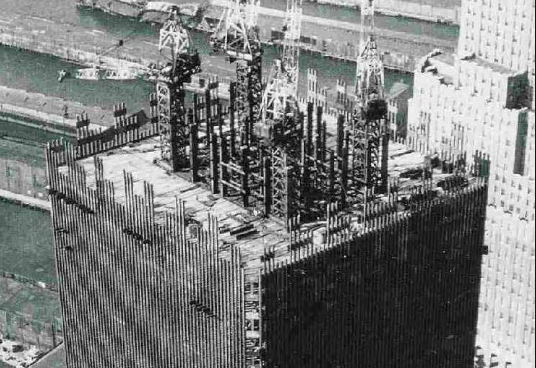
You guys have no clue what real evidence is!
WTC7 had only heated pockets of 500c and 600c ( thermal images show it)
That 400c is less than the required temp for FEMA theory to be believed!
500c to 600c, not one steel member will melt.
The evidence undoubtedly establishes that it could not have developed outside the building.
FEMA only dropped the temp required to melt steel when they found iron sulfide phases in the barriers of the steel! That still only a theory that sulfur removed the need for that extra 500c.
Steel in a fire will only melt near 1500c..
WTC7 had only heated pockets of 500c and 600c ( thermal images show it)
That 400c is less than the required temp for FEMA theory to be believed!
500c to 600c, not one steel member will melt.
The evidence undoubtedly establishes that it could not have developed outside the building.
FEMA only dropped the temp required to melt steel when they found iron sulfide phases in the barriers of the steel! That still only a theory that sulfur removed the need for that extra 500c.
Steel in a fire will only melt near 1500c..
edit on 14-12-2019 by Hulseyreport because: (no reason given)
a reply to: Hulseyreport
This was the questions.
So. You need to state what processes would cause the steel to turn black but not slag over.
So? Show a piece of pure steel that was melted? The pile was full of chemicals that attached the steel and resulted in compounds with lower melting points. Again, cite examples of recovered pools of frozen metal? Again, molten melt when hit with water causes violent steam eruptions. Please cite a case of molten steel reacting violently with water at ground zero? Like when the pile was sprayed to control the smoldering and flashing.
You
You referring to the below picture with a steel flange plate and steel bolting stripped
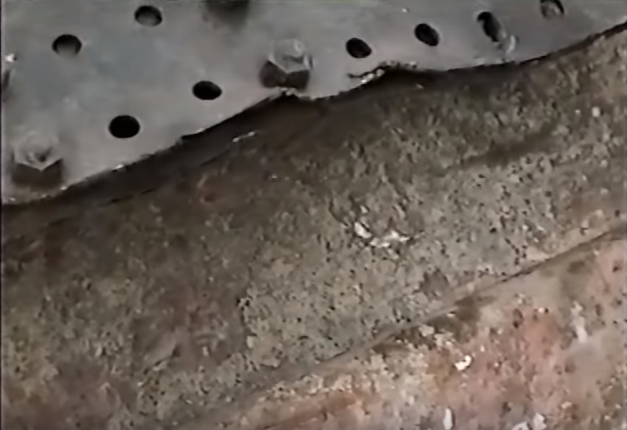
The insulation should be over on inch thick? The steel flange plate is not even an 1/2” thick, and shows what ever is still on the steel column below is thin. Not even an 1/8” thick. Looks more like a coating like epoxy, not mineral wool insulation.
You
Well, then actually quote the NIST claims.
You
Is it false the collapse of WTC 1 and 2 was initiated on the floors of the jet impacts. Making it impossible for CD system to survive.
The heat made the floor trusses still boxed In on each end bow down under load because they couldn’t expand. On cooling, the floor trusses contracted. This drew in the vertical columns. Is it false outer vertical columns bowed in at least 10 foot before they buckled?
For WTC 2. Once the bowing was great enough, the structure buckled at the floors of the jet impacts. The twenty floors above the buckling fell into the building below. The falling mass destroyed the floor system. This left vertical columns standing in the wake of the falling mass. The vertical columns toppled from loss of lateral support.



Back to WTC 7. WTC 7 had damage from being hit by the twin towers.
It’s not heat that is the most dangerous. Its thermal stress from uneven hearing.
WTC 7 probably had failures like WTC 5.
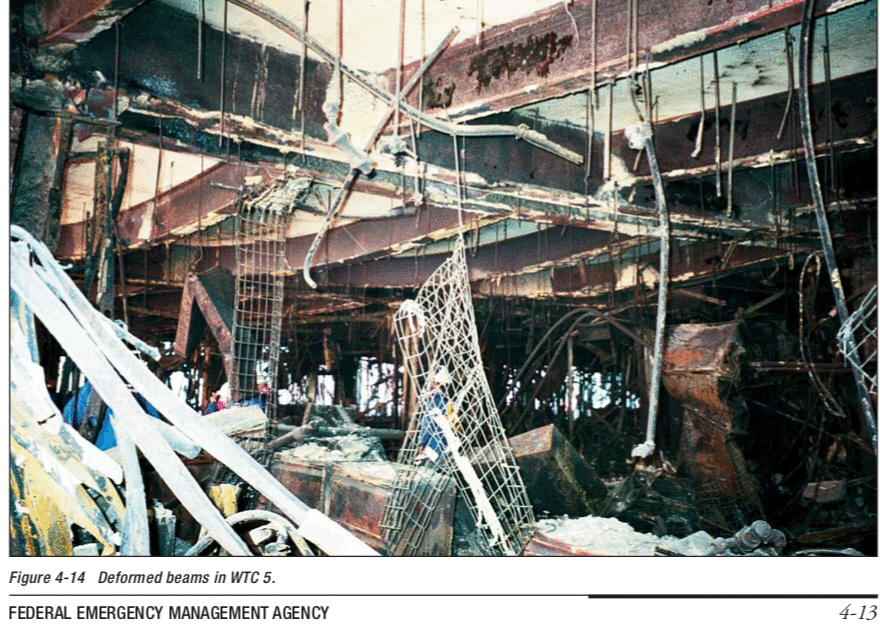
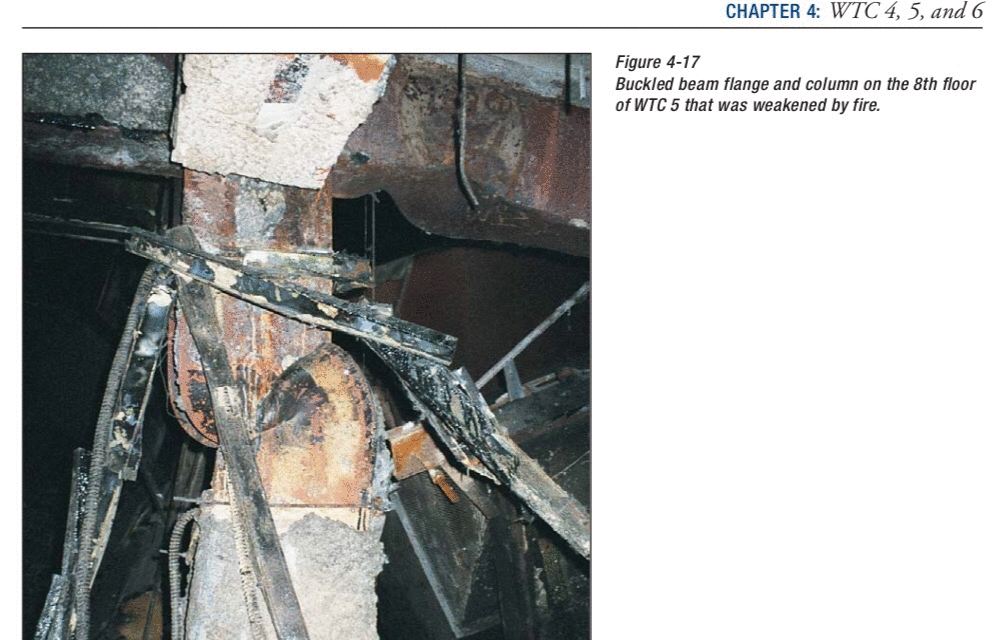
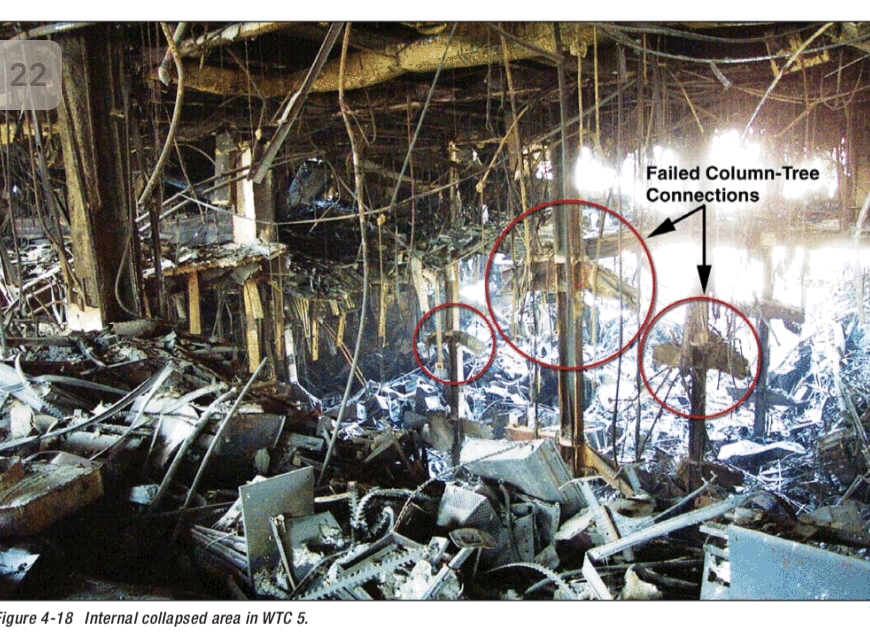
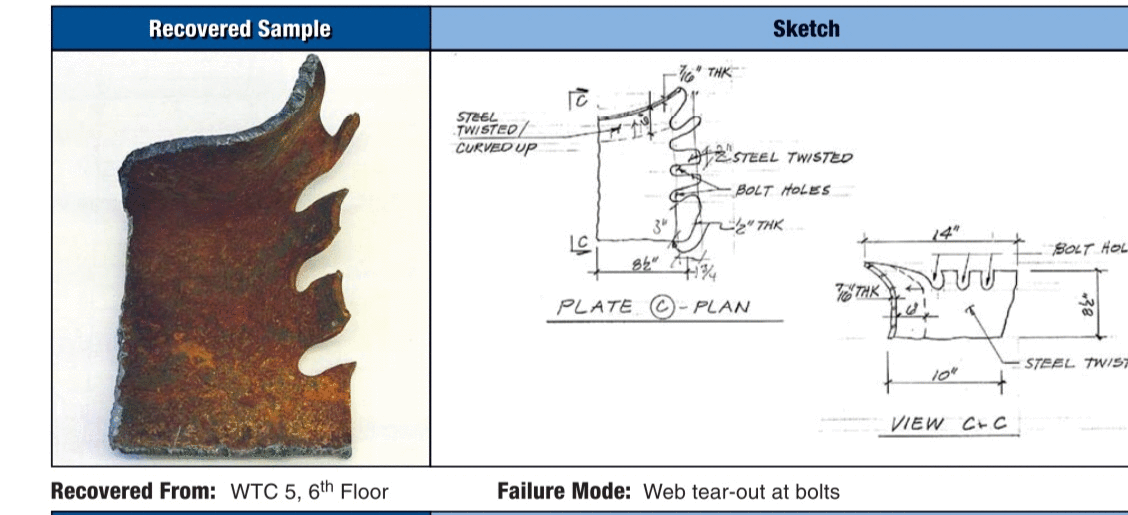
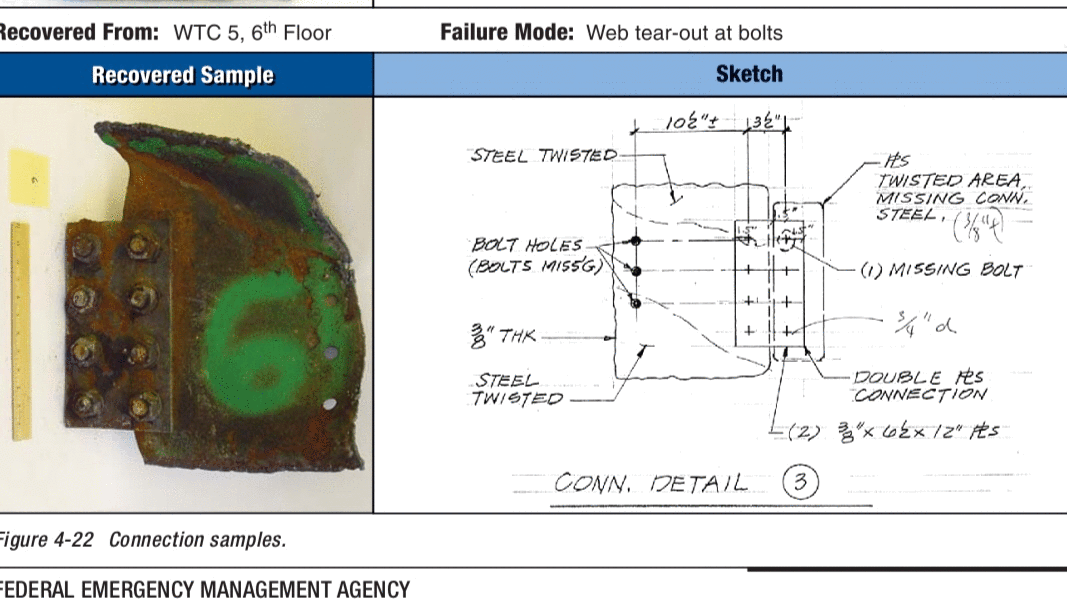
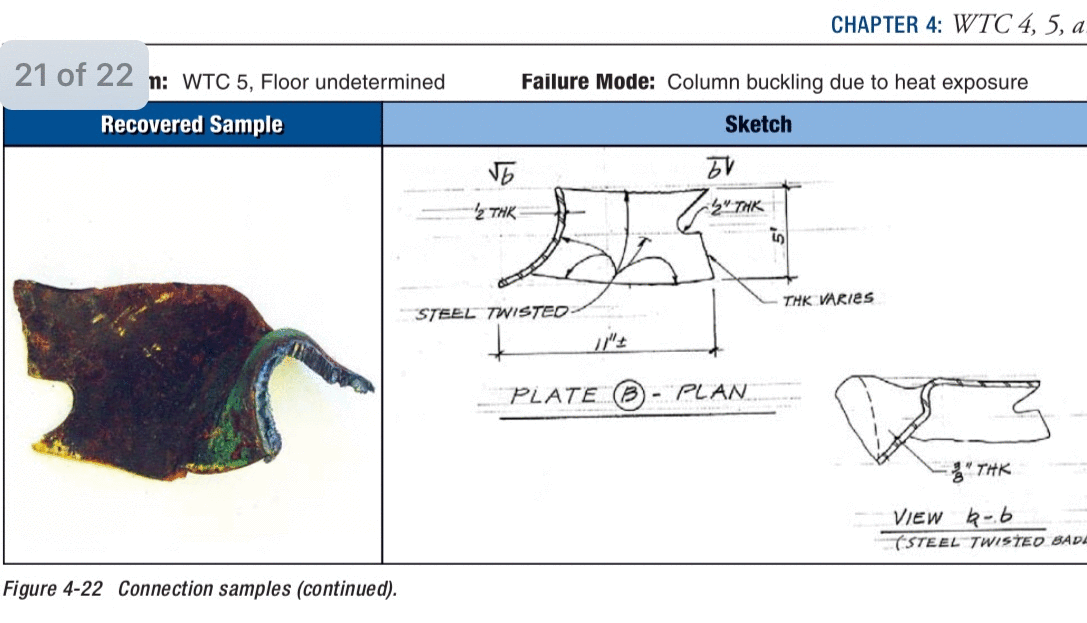
The vertical columns of WTC 7 had lateral support provided by floor connections. If enough connection failures as witnessed in WTC 5 occurred along a single vertical column in WTC 7, the column would fail.
This was the questions.
So. You need to state what processes would cause the steel to turn black but not slag over.
So? Show a piece of pure steel that was melted? The pile was full of chemicals that attached the steel and resulted in compounds with lower melting points. Again, cite examples of recovered pools of frozen metal? Again, molten melt when hit with water causes violent steam eruptions. Please cite a case of molten steel reacting violently with water at ground zero? Like when the pile was sprayed to control the smoldering and flashing.
You
Go get your eyes checked then? I can see the spray-on foam still there.
You referring to the below picture with a steel flange plate and steel bolting stripped

The insulation should be over on inch thick? The steel flange plate is not even an 1/2” thick, and shows what ever is still on the steel column below is thin. Not even an 1/8” thick. Looks more like a coating like epoxy, not mineral wool insulation.
You
That's NIST claim.
Well, then actually quote the NIST claims.
You
You merely look at the construction to notice a floor truss failure crushing the hat truss very unlikely.
Is it false the collapse of WTC 1 and 2 was initiated on the floors of the jet impacts. Making it impossible for CD system to survive.
The heat made the floor trusses still boxed In on each end bow down under load because they couldn’t expand. On cooling, the floor trusses contracted. This drew in the vertical columns. Is it false outer vertical columns bowed in at least 10 foot before they buckled?
For WTC 2. Once the bowing was great enough, the structure buckled at the floors of the jet impacts. The twenty floors above the buckling fell into the building below. The falling mass destroyed the floor system. This left vertical columns standing in the wake of the falling mass. The vertical columns toppled from loss of lateral support.



Back to WTC 7. WTC 7 had damage from being hit by the twin towers.
It’s not heat that is the most dangerous. Its thermal stress from uneven hearing.
WTC 7 probably had failures like WTC 5.






The vertical columns of WTC 7 had lateral support provided by floor connections. If enough connection failures as witnessed in WTC 5 occurred along a single vertical column in WTC 7, the column would fail.
edit on 14-12-2019 by neutronflux because: Added and fixed
a reply to: Hulseyreport
Quote where the NIST mechanism for the collapse of WTC 1, 2, 7 was melted steel.
Lots of failures in WTC 5 with no melted steel.






Quote where the NIST mechanism for the collapse of WTC 1, 2, 7 was melted steel.
Lots of failures in WTC 5 with no melted steel.






originally posted by: Hulseyreport
Go get your eyes checked then? I can see the spray-on foam still there.
And Ruby Grey can see Lloyd's taxi parked next to the cemetery with a light pole sticking out of it's windshield. You are just like her, no different. You both see what you want to see. You both see something that is not there.
Now lets take a look at your imaginary fireproofing.
You say you can see fireproofing on this exterior column.
Fireproofing insulation.

Same steel piece.
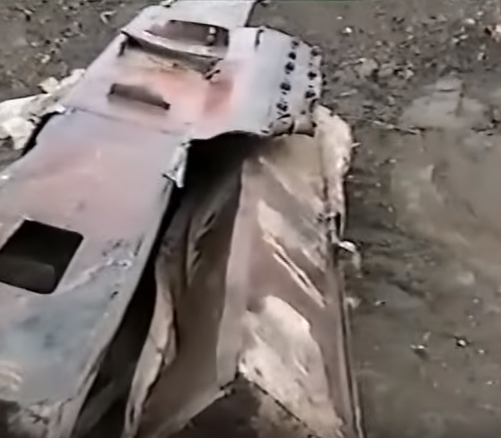
Here we have a scale plan view of an exterior column.
As you can see the fireproofing is very thick. It was 2" thick on the exterior columns. The column flanges were buried in it.
The column flanges are plainly visible in this photo, therefore this pice of steel has no fireproofing on it.

You will also never admit you are wrong. Just like Ruby.
new topics
-
Nvm
General Chit Chat: 44 minutes ago -
OK this is sad but very strange stuff
Paranormal Studies: 6 hours ago -
Islam And A Book Of Lies
Religion, Faith, And Theology: 7 hours ago -
Sorry to disappoint you but...
US Political Madness: 9 hours ago
top topics
-
Sorry to disappoint you but...
US Political Madness: 9 hours ago, 13 flags -
Watch as a 12 million years old Crab Emerges from a Rock
Ancient & Lost Civilizations: 14 hours ago, 10 flags -
OK this is sad but very strange stuff
Paranormal Studies: 6 hours ago, 6 flags -
Islam And A Book Of Lies
Religion, Faith, And Theology: 7 hours ago, 5 flags -
Nvm
General Chit Chat: 44 minutes ago, 0 flags
active topics
-
Nvm
General Chit Chat • 1 • : Mantiss2021 -
Post A Funny (T&C Friendly) Pic Part IV: The LOL awakens!
General Chit Chat • 7993 • : Cymru -
Joe Biden gives the USA's Highest Civilian Honor Award to Hillary Clinton and George Soros.
US Political Madness • 48 • : Flyingclaydisk -
ILLUMINATION: Dimensions / Degrees – Da Vincis Last Supper And The Philosophers Stone
Secret Societies • 6 • : Compendium -
Sorry to disappoint you but...
US Political Madness • 15 • : Flyingclaydisk -
Meta Llama local AI system is scary good
Science & Technology • 39 • : Arbitrageur -
Musk calls on King Charles III to dissolve Parliament over Oldham sex grooming gangs
Mainstream News • 180 • : Freeborn -
Islam And A Book Of Lies
Religion, Faith, And Theology • 3 • : nugget1 -
Outgoing Lame Duck BIDEN Officials and Democrats Voice Their Regrets.
2024 Elections • 30 • : WeMustCare -
Tesla Cybertruck Explodes in Front of Trump Hotel in Las Vegas
Mainstream News • 229 • : Daughter2v2



